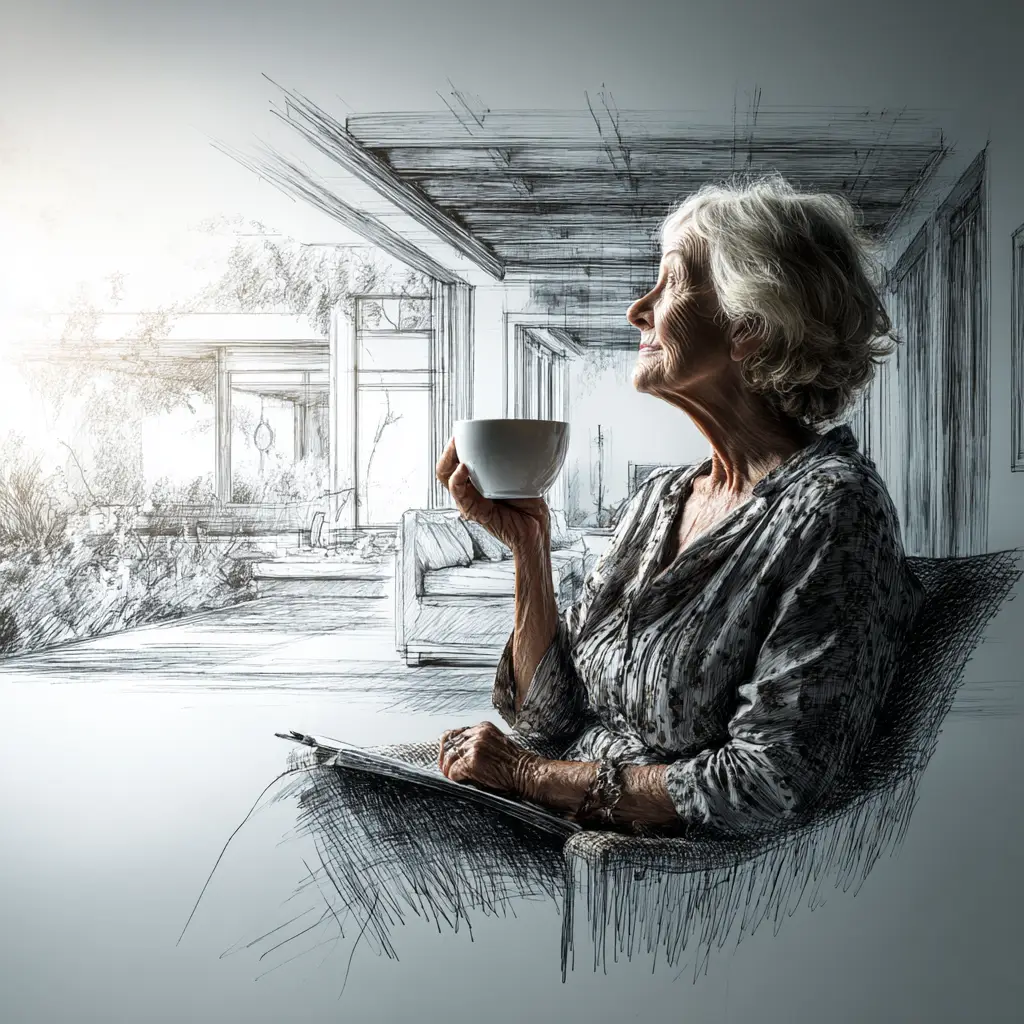How Smart Technology Empowers Seniors to Age in Place with Dignity and Independence
For many seniors, the desire to live out their years in the comfort of their own home—a concept known as aging in place—is a deeply held wish. It represents a life of independence, dignity, and connection to a place filled with memories. However, this desire is often met with challenges, from mobility issues to safety concerns.
In my book, The Thinking Home, I introduce Eleanor, an 82-year-old widow who wants to continue living in the home she’s owned for fifty years. Her story, and her grandson David’s, is a powerful testament to how a thoughtfully designed smart home can become a silent, reliable partner that makes independent living not just possible, but safer and more fulfilling.
Beyond Gadgets: A System for Safety, Accessibility, and Connection
For Eleanor and David, the goal was never to fill her home with trendy technology but to solve real-world problems. Their journey began by identifying key areas where automation could provide the greatest benefit: safety, accessibility, and connection.
A Thinking Home for someone aging in place is built on a foundation of proactive safety measures. Consider these critical automations:
- Automated Fire Safety: A smart smoke detector does more than sound an alarm. In Eleanor’s home, it initiates a safety sequence: all lights turn on to illuminate escape routes, the front door unlocks for emergency services, and a critical alert is sent to David’s phone. This transforms a passive alert into an active response that can save precious seconds.
- Leak and Hazard Prevention: Small water leak sensors provide an immediate alert at the first sign of a drip, preventing a minor issue from becoming a catastrophic flood. Similarly, a smart carbon monoxide detector can trigger ventilation fans and send alerts, offering an active defense against an invisible threat.
- Intelligent Lighting for Safe Navigation: Falls are a common risk for seniors, especially at night. Eleanor’s “Safe Pathway” automation detects her getting out of bed and illuminates a path to the bathroom at a soft, dim 20% brightness—just enough to see safely without a jarring shock.
- Fall Detection: One of the biggest safety concerns for seniors is the risk of a fall, and a smart home can offer a proactive safety net beyond a traditional medical alert button. Advanced sensors can now automatically detect a fall and send for help. Privacy-preserving millimeter-wave (mmWave) radar sensors can detect the sudden change in posture of a fall and send an alert without using a camera. Alternatively, for those comfortable with visual monitoring, AI-powered cameras can recognize the movements of a fall and send an alert with video context for immediate assessment. Both technologies transform the smart home into a silent guardian that can automatically call for help when it’s needed most.
Enhancing Daily Life with Simple, Accessible Control
A truly smart home should reduce complexity, not add to it. For Eleanor, the ability to control her environment easily is a powerful tool for her independence.
- The Power of Voice: Voice control is a primary accessibility tool. The ability for Eleanor to turn off her lights, adjust the thermostat, or ask for the time without getting out of bed is a simple but profound enhancement to her daily life.
- The Goodnight Button: David programmed a single button for Eleanor that runs a Goodnight script. One touch locks the doors, turns off all the lights, and sets the thermostat, consolidating an end-of-day routine into a single, effortless action.
Connection and Peace of Mind for the Whole Family
A Thinking Home can also serve as a gentle, non-intrusive link between family members, providing peace of mind without compromising a senior’s privacy and autonomy.
- Medication Reminders: A smart pill dispenser can give a visual or audible alert when it’s time for medication. More importantly, if a dose is missed within a set timeframe, the system can automatically notify a family member.
- Automated Check-ins: For an extra layer of assurance, the system can perform a daily wellbeing check. A smart speaker can ask, “Good morning, Eleanor. Is everything okay today?” If there is no response, the system sends an alert to David that a check-in was missed, offering a non-intrusive way to confirm a loved one is safe each day.
- The Medic Alert Button: A simple, wearable smart button allows Eleanor to send an alert directly to David’s phone if she needs assistance. When pressed, a smart speaker in her home announces, “Your family has been notified,” providing immediate reassurance that help is on the way.
Your Home, Your Journey
Eleanor’s story demonstrates that a Thinking Home is not about the technology itself, but about what it can do for the people who live there. It’s about creating an environment that anticipates needs, provides automated safety nets, and makes daily tasks easier.
It is crucial, however, to end with an important perspective. As I emphasize in my book, a smart home enhances, it does not replace. Technology is a powerful tool, but it is not a substitute for a solid safety plan and the irreplaceable value of human connection. The systems we’ve discussed are designed to supplement these routines, providing an extra layer of security and peace of mind. They are a silent partner, working in the background to make a good care plan even better.
By focusing on a philosophy of Intentional Planning—identifying real-world needs, you can build a system that empowers seniors to live with greater independence, safety, and dignity. The journey begins not with a trip to the electronics store, but with a conversation about what matters most, ensuring that technology always serves its most important purpose: caring for the people we love.

